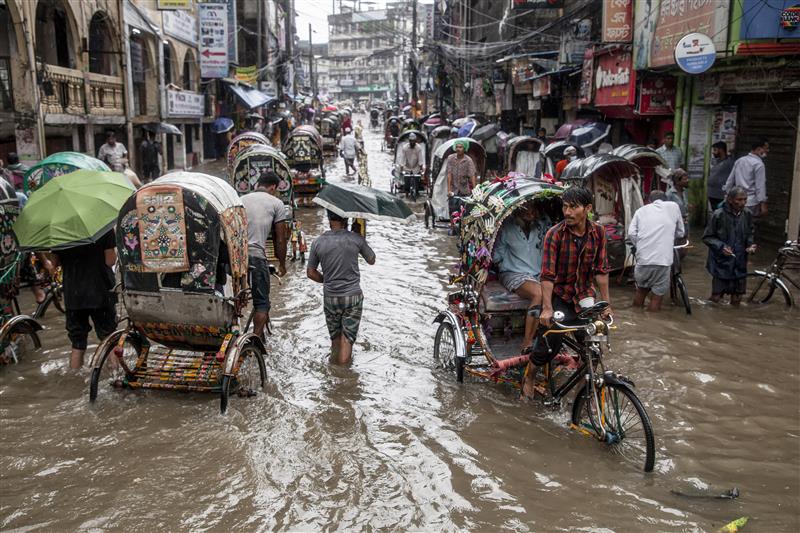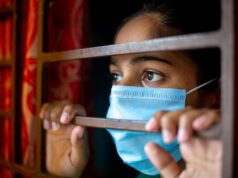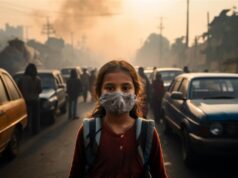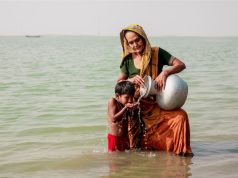Every monsoon, different parts of India watch their streets vanish under water with rickshaws drifting past submerged homes, ponds spilling over, and daily life grinding to a halt. Floodwater isn’t just inconvenient. They’re dangerous and beneath the surface, pathogens such as bacteria, parasites, viruses multiply and thrive.
Vectors are living creatures that spread infectious pathogens between humans or from animals to humans. About 17% of infectious diseases are vector-borne. Most are blood-feeding insects that pick up disease-causing microbes when they bite an infected host. After the pathogens multiply inside them, they can pass the infection to others through future bites. Once infected, vectors usually remain capable of transmitting the disease for the rest of their lives. Every year, over 700,000 people die from such diseases like malaria, dengue, schistosomiasis, African sleeping sickness, leishmaniasis, Chagas disease, yellow fever, Japanese encephalitis, and river blindness1.
Floods trigger outbreak
Flood sets the stage for outbreaks as it immediately contaminates water sources, triggering diarrheal diseases such as cholera, typhoid, hepatitis, and ETEC infections. Following the August 2024 floods in Bangladesh, nearly 5 million people were displaced, water supplies were contaminated with sewage, and diarrhoeal illness spiked in households and displacement camps2.
Once the murky waters recede, vector-borne threats emerge. Stagnant pools create perfect breeding grounds. For instance, in South Sudan, the catastrophic floods of late 2024 impacted over 735,000 people and led to resurgences in malaria and waterborne diseases in displacement camps3.In Southern Brazil, the May 2024 floods triggered a leptospirosis outbreak, a bacterial disease spread through water, highlighting how floods amplify pathogen contamination in urban settings with weak sanitation4.
India’s vulnerability is evident. According to the Central Water Commission (CWC), floods in India claimed over 100,000 lives and caused economic losses exceeding ₹4.69 trillion between 1952 and 2018. Roughly 14% of India’s land is vulnerable to flooding and around 16% of this area is affected annually, leading to estimated damages of more than ₹18 billion each year5. Moreover, in July 2023, floods in Delhi and Himachal Pradesh led to record dengue and chikungunya cases in the following weeks6 States like Kerala, Maharashtra, West Bengal, and Assam routinely face dual crises of displacement and outbreak.
Are we prepared?
Despite growing awareness, India’s approach remains largely reactive, with responses often mobilized only after outbreaks are underway. Several critical weaknesses continue to hinder proactive policy and long-term resilience:
- Urban planning failures: Rapid, unregulated urban expansion has left many Indian cities highly vulnerable to flooding and post-flood disease outbreaks. Poor drainage, inadequate waste disposal, and construction on natural floodplains mean that stagnant water lingers long after the rains, ideal conditions for mosquito breeding. Cities like Delhi, Patna, and Bengaluru experience repeat cycles of flooding followed by disease, yet urban planning rarely factors in vector control as a design requirement.
- Fragmented vector control efforts: Responsibility for controlling mosquito populations is scattered across municipal bodies, health departments, and urban development agencies, often with poor coordination. Vector control tends to be reactive and limited to seasonal fogging or larvicide spraying, with no centralized system to monitor effectiveness or ensure year-round coverage.
- Underfunding: Vector-borne disease control often receives a disproportionately small share of state health budgets. Emergency funds for flood-related health threats are rarely pre-allocated, leaving local authorities scrambling for resources during outbreaks. Long-term investments in infrastructure, surveillance, or preventive healthcare remain inadequate7.
What needs to change
The intersection of climate events and public health demands a fundamental shift in India’s disaster and disease response. India should invest in predictive modelling that combines weather data, flood forecasts, and historical outbreak patterns to identify disease hotspots before they flare up. Collaboration between the India Meteorological Department (IMD) and the National Centre for Disease Control (NCDC) can help build early warning systems tailored to regional flood dynamics.
Moreover, flood-prone regions need mobile health units equipped with rapid diagnostic kits for malaria, dengue, chikungunya, and leptospirosis. These units should be deployed proactively during flood season, particularly in rural districts where lab-based testing is unavailable or delayed. Urban flood resilience must also include vector control infrastructure. This means redesigning stormwater drains, sealing open water storage, enforcing construction setbacks from floodplains, and deploying real-time waterlogging alert systems.
India already has a centralized program in place called the National Center for Vector Borne Diseases Control (NCVBDC) to oversee prevention and control of diseases like malaria, dengue, chikungunya, and Japanese encephalitis. However, gaps persist in implementation, coordination with state governments, and integration with sectors like urban development, water, and disaster response. Strengthening NCVBDC with can improve the program’s reach and resilience. It is also important to learn from global best practices. Several countries offer models worth emulating:
- Cuba has achieved remarkable success in dengue control through door-to-door vector surveillance and neighborhood-level data collection.9
- Singapore uses real-time mobile apps to report mosquito hotspots, which are immediately mapped and acted upon through centralized vector management teams9
- Bangladesh, facing similar monsoon challenges, has deployed floating clinics to maintain uninterrupted care during flood seasons, an innovative solution for hard-to-reach areas10.
Floods and vector-borne diseases are no longer separate challenges. They are interlinked emergencies, exacerbated by climate change and decades of underinvestment in health infrastructure. For India, the question is not if another flood-driven disease outbreak will occur, but how soon, and how devastating it will be.
We can no longer afford to treat each flood and outbreak as an isolated incident. The path forward requires coordinated, multi-sectoral policy, long-term infrastructure planning, empowered local governance, and resilient public health systems. The signs are clear. The science is sound. What’s needed now is sustained political will, because when disaster strikes, prevention is the only cure..
[1]https://www.who.int/news-room/fact-sheets/detail/vector-borne-diseases
[2]https://www.jpmph.org/upload/pdf/jpmph-24-495.pdf
[3] https://www.unicef.org/media/164121/file/South-Sudan-Humanitrian-SitRep-No-09-September-2024.pdf
[4] https://www.mdpi.com/2673-4672/4/3/28
[7]https://pmc.ncbi.nlm.nih.gov/articles/PMC9552385/
[8]http://idpjournal.biomedcentral.com/articles/10.1186/s40249-024-01224-1
[9] https://edepot.wur.nl/528033
[10] https://bracusa.org/bangladesh-flood-update-floating-clinics-clean-water-and-renewed-hope/







